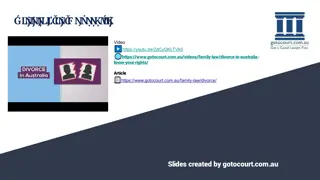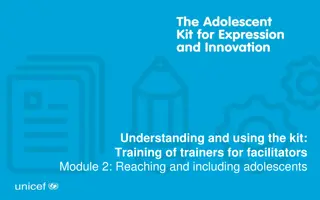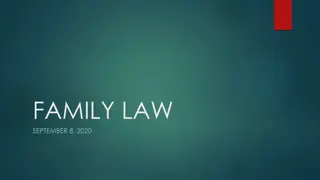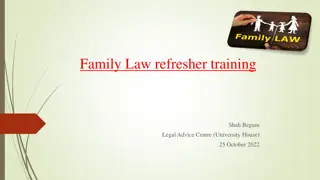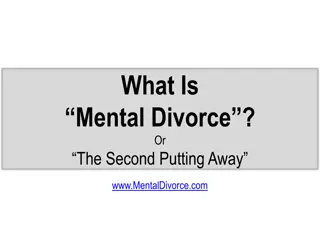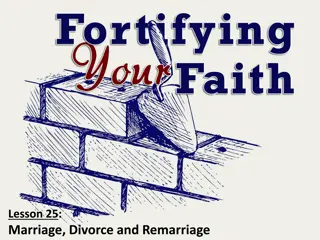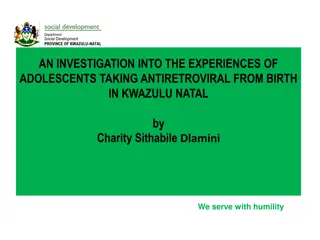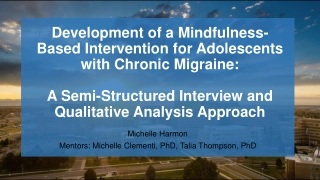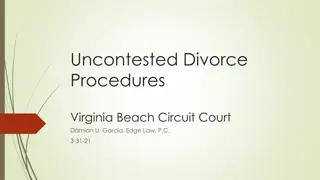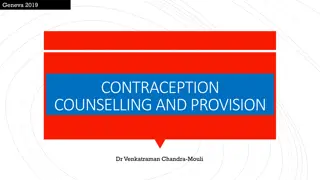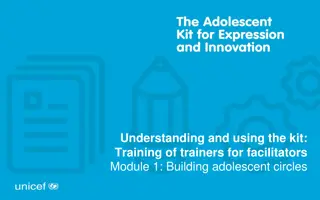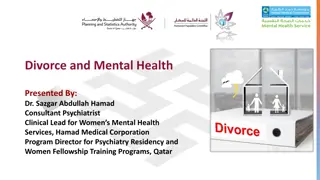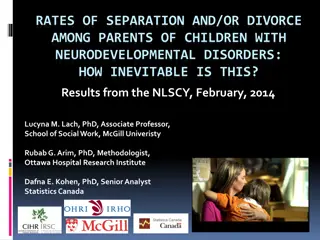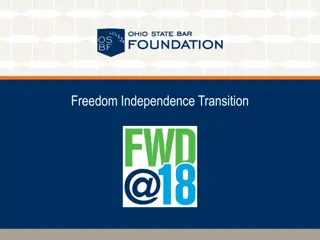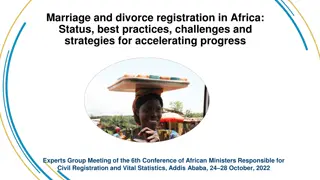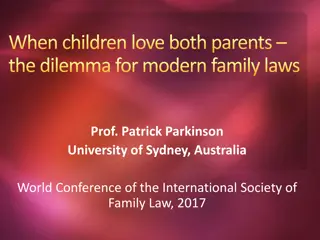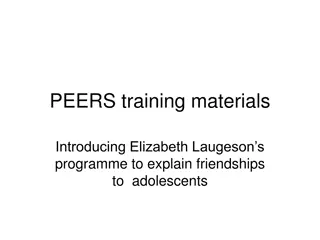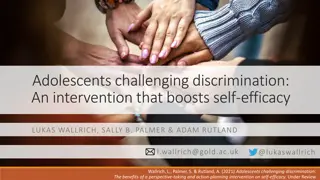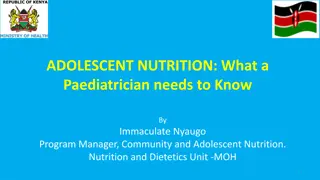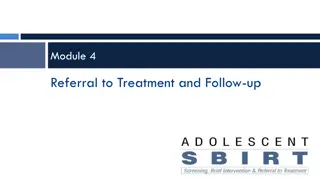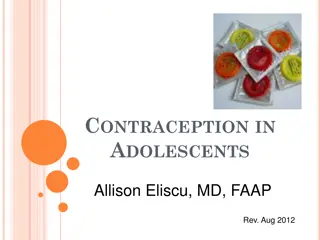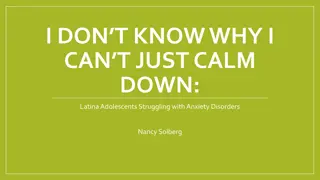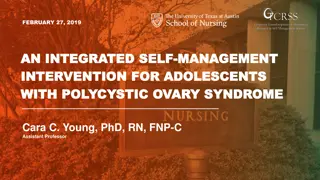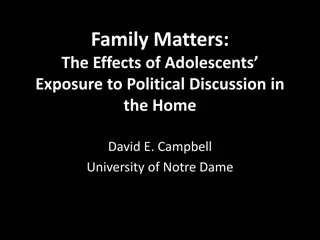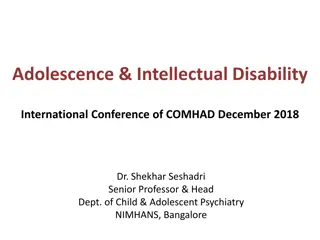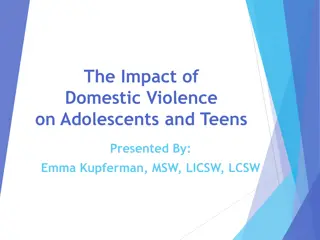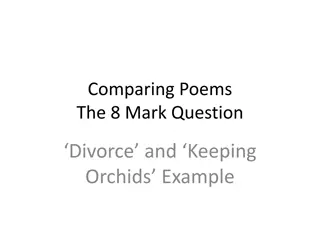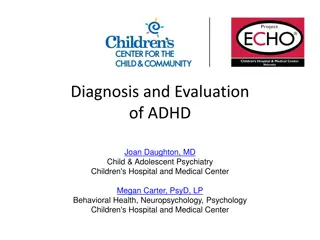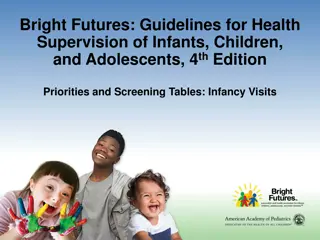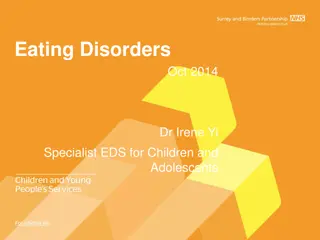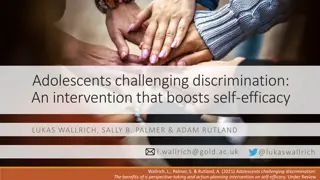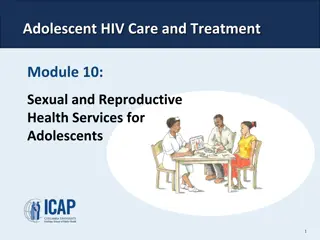The Impact of Divorce on Adolescents: A Comprehensive Analysis
This research delves into the effects of divorce on adolescents, examining the various dimensions of their lives including family relationships, academic performance, social interactions, and personal well-being. The study highlights the challenges faced by adolescents during the divorce process and identifies key factors influencing their adjustment and reaction to this life-altering event.
Download Presentation

Please find below an Image/Link to download the presentation.
The content on the website is provided AS IS for your information and personal use only. It may not be sold, licensed, or shared on other websites without obtaining consent from the author. Download presentation by click this link. If you encounter any issues during the download, it is possible that the publisher has removed the file from their server.
E N D
Presentation Transcript
Assignment Title: The effects of divorce on adolescents Student Name: Maria Griva Registration Number: G20711057 Tutor: Dr. Eirini Zacharostylianaki Submission Date: 21.02.2016 Word Count: 1,163
The effects of divorce on adolescents PREPARED BY MARIA GRIVA FOR THE PS 4211 CHILD BEHAVIOUR AND IMPACTS ON DEVELOPMENT
The effects of divorce on adolescents INTRODUCTORARY REMARKS DIVORCE ORIGIN: from Latin divortium, based on divertere (see divert ); via French from Latin divertere, from di- aside + vertere to turn. cause (someone or something) to change course or turn from one direction to another
The effects of divorce on adolescents Adolescence (12-18 years): the transitional period between childhood and adulthood, in which the children prepare for adult roles. Physical, cognitive, behavioural, emotional, social and personality development, self-concept evolvement (D. R. Shaffer & Kipp, 2014) The subculture of adolescence (Nowinski, 2010) Empathy - In conflict with parents (Van Lissa, Hawk, Branje, Koot, Meeus, 2014) Adolescent identity crisis (Gilmore, Meersand 2013; McLean, Syed, 2013) Developmental continuity theory(Do we remain the same or do we reflect our past and the experiences we have lived?) Attachment theory(Eagan, 2011) EVERY ADOLESCENT IS DIFFERENT EVERY ADOLESCENT EXPERIENCES DIFFERENT CONSEQUENCES OUT OF HER/HIS PARENTS DIVORCE
The effects of divorce on adolescents The key-pillars for adolescents reaction (and adjustment) to divorce FAMILY-ORIENTED Decline in relationships with parents The absence of the one parent The adjustment of the custodial parent The need to take side, supporting one parent The interparental conflict SCHOOL-ORIENTED Lower academic achievement Probability to drop out of school FRIENDS- AND ROMANCE-ORIENTED Behavioural problems Sexual and relationship problems Early pregnancy incidents Lack of trust in love COMMUNITY-ORIENTED Economic difficulties The stigma of divorce Negative outcomes on the labor market Criminality Less political & volunteering interest/participation SELF-ORIENTED Suicidal thoughts, depression, blaming her/himself for the divorce, loneliness, anger, increased use of alcohol and drugs, more probability to become a smoker Stressful life-transitions in general
The effects of divorce on adolescents The family-oriented key pillar The need for the role model of the absent parent (Amato, 2001; Kalmijn, 2015; Fitzsimons, Mesnard, 2014) The need for the role model of the parent of the same sex with child (Amato, 2001) The well-known guilty: stress! Divorce is extremely stressful ( stress theory : Pearlin, Schieman, Fazio, & Meersman, 2005) and adults need time for their adjustment (Amato, 2010). Conflict, but not divorce, is associated with children's outcomes ( the good divorce hypothesis , Amato, Kane and James, 2011) When a divorce is followed with legal battles over custody, the post-divorce conflict affects children s well-being (Eskind-Noses, 2013) A shift towards equal custodial rights for both mother and fathers (Sodermans, Vanassche, Matthijs, Swicegood, 2014) The possibility of the parentification of adolescents (Perrin, Ehrenberg, Hunter, 2013 citing Boszormenyi-Nagy & Spark, 1973) Children who experience the death of a parent have a LOWER lever of well-being in comparison to children of divorce (Amato, Anthony, 2014)
The effects of divorce on adolescents The school-oriented key-pillar Lower academic achievement (Lansford 2009, Bernardi and Radl 2014, Odenweller, 2014; Koschnitzky, Seiki, 2012) regardless of the race of adolescents (Khan, Morandi, Garcia, 2014) Less motivation by decline of parental support (Bernard, Nalbone, Hecker, Degges-White, 2015) Poorer psychosocial well-being leads progressively to lower academic outcomes (Potter, 2010) Lower grades in tests (Arkes 2014), negative expectations for their academic future (Anthony, DiPerna, Amato, 2014) More probability to drop-out of school (less attention from parents, need to work) (D Onofrio, 2011) More probability to get into trouble in school (Lansford, 2009) The possible lack in economic resources may bring lack in academic sources (Nooshin, Siti, Rumaya, Manson, Mariani, 2011)
The effects of divorce on adolescents Friends-oriented/Romance-oriented key pillars The gender difference criterion: boys seem to face more difficulties ((Blakeslee & Wallerstein, 1989 as cited by Eagle, 2011); girls more likely to experience depression (Oldehinkel, Ormel, Veenstra, De Winter & Verhulst, 2008), but as a meta-analysis by Amato (2001) revealed there are not significant differences between girls and boys reactions (Eagle, 2011) Devotion in friendships (Arnett, 2012), best possible help is their friends (Ehrenberg, Stewart, Roche, Pringle, Bush, 2016) and reactions if a change of residence occurs Early marriage (Amato, Kein, 2011) for the most but also delay of marriage for many of the adolescents who experience parental divorce (Hartman, Magalh es, Mandich, 2011) Behavioural problems (Weaver, Schofield, 2015) Risky and dangerous sexual behaviours (Simons, Gordon, Sutton, Tara, Gibbons, Murry, Mcbride, 2016) Early pregnancies (Burke, McIntosh, Gridley, 2009)
The effects of divorce on adolescents Community-oriented key pillar ECONOMIC DECLINE Divorce causes economic decline, which, as expected, increases the risk of child problems (Lansford, 2009; Amato, Kane and James, 2011; Basikova-Sleskova, Benka, Jozef, Orosova, 2015) THE DIVORCE STIGMA (Lansford, 2009) NEGATIVE OUTCOMES ON LABOR MARKET, FOR THEIR EMPLOYMENT AS ADULTS (Millemaci, Sciulli, 2013) THE SUPPORTING ROLE OF RELIGIOUSNESS (Knabb, 2010) TENDENCY TOWARDS CRIMINALITY (Burt et al., 2008; Parks, 2013; Esmaeili, Yaacob, 2011) LESS POLITICAL AND VOLUNTEERING ENGAGEMENT (Voorpostel, Coff , 2015) The socio-economic status of parents criterion for adolescent s political & volunteering interest (Voorpostel, Coff , 2015)
The effects of divorce on adolescents Self-oriented key pillar Suicidal thoughts (Fuller-Tompson, 2011) Mental health problems (Reiter et al., 2013) Disappointment (( ngarne-Lindberg, Wadsby, Berter , 2009) Loneliness (Aktar 2013) Depression (Taylor, 2012, Oldehinkel, Ormel, Veenstra, Winter, Verhulst, 2008; P lmarsd ttir, 2015) Blaming her/himself for the divorce (Hudson, 2012) Decline in self-concept (Amato 2001; Fischer, 2005; Rathus, 2013; Emery, 2013) Anger (Aktar, 2013) Increased use of alcohol and drugs (Stickley et al. 2013); however, environmental and genetic factors also play a major role for substance use (D Onofrio et. al, 2007) More probability to smoke (Maffini, Cara, Vaughan, Wong, 2015) Stressful life-changes in general (a reciprocation of stressors & resources , Amato, 1991) Resources: parental support and parental socioeconomic resources. Stressors: interparental conflict before and after divorce, life changes, loss of contact with a parent, decline in quality of relationship with a parent, change in economic status. Amato concludes that children with minimal loss of resources and minor stressors after divorce are unlikely to experience a decrease in well-being.
The effects of divorce on adolescents RELEVANT FACTS The factor of the passage of time (Amato, Kane, James, 2011) o Time is a healer as the saying goes (Booth & Amato, 1991; Wolfelt, Maloney, 2011). So, the well-being of children of divorce is positively associated with the post- divorce psychological adjustment of the custodial parent. Longitude studies suggest that children's behaviour improves in the first year or two following divorce. However, negative consequences may persist over a long period of time or the negative outcomes of divorce may come later (Prevoo, Weel, 2015; Arkes 2014) The other side of the coin: the positive outcomes experienced by adolescents o Contentment/Satisfaction ( ngarne-Lindberg, Wadsby, Berter , 2009), reappraisal (Plooy, Rensburg, 2015) More self-confidence ( ngarne-Lindberg, Wadsby, Berter , 2009) Autonomy Development (Plooy, Rensburg, 2015)
The effects of divorce on adolescents Mixed research results (Lansford, 2009) Not clear if children of divorced families have more problems to adjust in comparison with children of intact families Adolescents adjust rather well (Burke, McIntosh, Gridley, 2009) Adolescents struggle for identity (Pathy, Castro & Cirong, 2015; Nowinski, 2010) PROPOSALS FOR FUTURE RESEARCH More focus on: Identity split based on identity development (McLean, Syed, 2015) Family diversity (D Onofrio, 2011; Meggiolaro, Ongaro, 2014) Globalization & Migration Positive outcomes
The effects of divorce on adolescents Thank you for your attention!


